Progress in Molecular Nanoarchitectonics and Materials Nanoarchitectonics
- PMID: 33804013
- PMCID: PMC7998694
- DOI: 10.3390/molecules26061621
Progress in Molecular Nanoarchitectonics and Materials Nanoarchitectonics
Abstract
Although various synthetic methodologies including organic synthesis, polymer chemistry, and materials science are the main contributors to the production of functional materials, the importance of regulation of nanoscale structures for better performance has become clear with recent science and technology developments. Therefore, a new research paradigm to produce functional material systems from nanoscale units has to be created as an advancement of nanoscale science. This task is assigned to an emerging concept, nanoarchitectonics, which aims to produce functional materials and functional structures from nanoscale unit components. This can be done through combining nanotechnology with the other research fields such as organic chemistry, supramolecular chemistry, materials science, and bio-related science. In this review article, the basic-level of nanoarchitectonics is first presented with atom/molecular-level structure formations and conversions from molecular units to functional materials. Then, two typical application-oriented nanoarchitectonics efforts in energy-oriented applications and bio-related applications are discussed. Finally, future directions of the molecular and materials nanoarchitectonics concepts for advancement of functional nanomaterials are briefly discussed.
Keywords: bio-related application; energy-oriented application; nanoarchitectonics; nanotechnology.
Conflict of interest statement
The authors declare no conflict of interest.
Figures

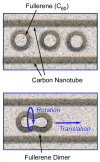

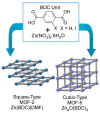
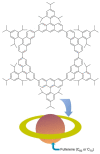


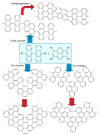

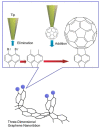

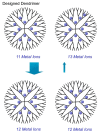



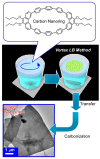
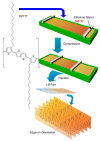

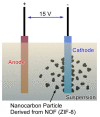
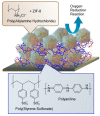
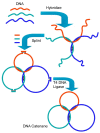
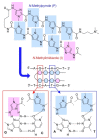
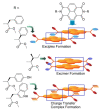



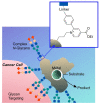
Similar articles
-
Molecular nanoarchitectonics: unification of nanotechnology and molecular/materials science.Beilstein J Nanotechnol. 2023 Apr 3;14:434-453. doi: 10.3762/bjnano.14.35. eCollection 2023. Beilstein J Nanotechnol. 2023. PMID: 37091285 Free PMC article. Review.
-
Bio-interactive nanoarchitectonics with two-dimensional materials and environments.Sci Technol Adv Mater. 2022 Mar 30;23(1):199-224. doi: 10.1080/14686996.2022.2054666. eCollection 2022. Sci Technol Adv Mater. 2022. PMID: 35370475 Free PMC article. Review.
-
Biomimetic and Biological Nanoarchitectonics.Int J Mol Sci. 2022 Mar 25;23(7):3577. doi: 10.3390/ijms23073577. Int J Mol Sci. 2022. PMID: 35408937 Free PMC article. Review.
-
Review of advanced sensor devices employing nanoarchitectonics concepts.Beilstein J Nanotechnol. 2019 Oct 16;10:2014-2030. doi: 10.3762/bjnano.10.198. eCollection 2019. Beilstein J Nanotechnol. 2019. PMID: 31667049 Free PMC article. Review.
-
Nanoarchitectonics: what's coming next after nanotechnology?Nanoscale Horiz. 2021 May 4;6(5):364-378. doi: 10.1039/d0nh00680g. Nanoscale Horiz. 2021. PMID: 33949390
Cited by
-
Nanoarchitectonics of a Microsphere-Based Scaffold for Modeling Neurodevelopment and Neurological Disease.ACS Appl Bio Mater. 2022 Feb 21;5(2):528-544. doi: 10.1021/acsabm.1c01012. Epub 2022 Jan 19. ACS Appl Bio Mater. 2022. PMID: 35045249 Free PMC article.
-
Molecular nanoarchitectonics: unification of nanotechnology and molecular/materials science.Beilstein J Nanotechnol. 2023 Apr 3;14:434-453. doi: 10.3762/bjnano.14.35. eCollection 2023. Beilstein J Nanotechnol. 2023. PMID: 37091285 Free PMC article. Review.
-
Hierarchical Bi2WO6/TiO2-nanotube composites derived from natural cellulose for visible-light photocatalytic treatment of pollutants.Beilstein J Nanotechnol. 2022 Aug 4;13:745-762. doi: 10.3762/bjnano.13.66. eCollection 2022. Beilstein J Nanotechnol. 2022. PMID: 35975179 Free PMC article.
-
Two-dimensional molecular networks at the solid/liquid interface and the role of alkyl chains in their building blocks.Beilstein J Nanotechnol. 2023 Aug 23;14:872-892. doi: 10.3762/bjnano.14.72. eCollection 2023. Beilstein J Nanotechnol. 2023. PMID: 37674543 Free PMC article. Review.
-
Electrical Stimuli-Responsive Decomposition of Layer-by-Layer Films Composed of Polycations and TEMPO-Modified Poly(acrylic acid).Polymers (Basel). 2022 Dec 7;14(24):5349. doi: 10.3390/polym14245349. Polymers (Basel). 2022. PMID: 36559714 Free PMC article.
References
-
- Ariga K., Ji Q., Nakanishi W., Hill J.P., Aono M. Nanoarchitectonics: A new materials horizon for nanotechnology. Mater. Horiz. 2015;2:406–413. doi: 10.1039/C5MH00012B. - DOI
-
- Ariga K., Minami K., Ebara M., Nakanishi J. What are the emerging concepts and challenges in NANO? Nanoarchitectonics, hand-operating nanotechnology and mechanobiology. Polym. J. 2016;48:371–389. doi: 10.1038/pj.2016.8. - DOI
-
- Muramatsu W., Hattori T., Yamamoto H. Game change from reagent- to substrate-controlled peptide synthesis. Bull. Chem. Soc. Jpn. 2020;93:759–767. doi: 10.1246/bcsj.20200057. - DOI
Publication types
Grants and funding
LinkOut - more resources
Full Text Sources
Other Literature Sources

